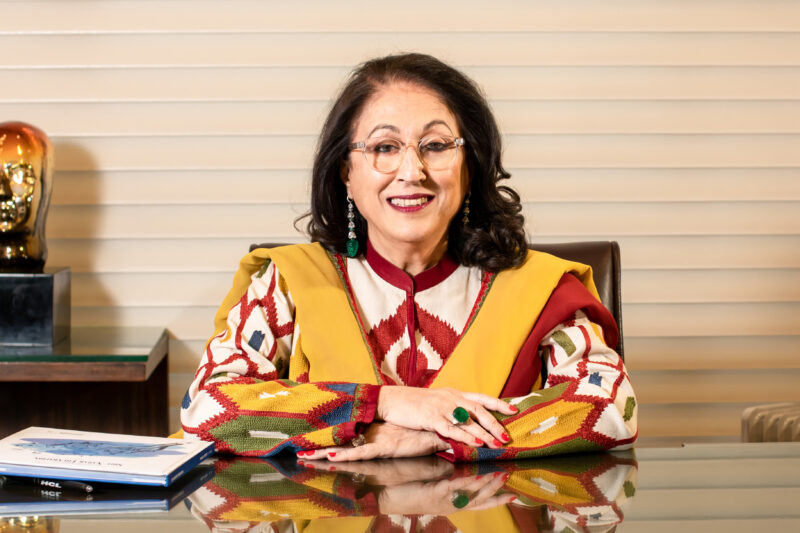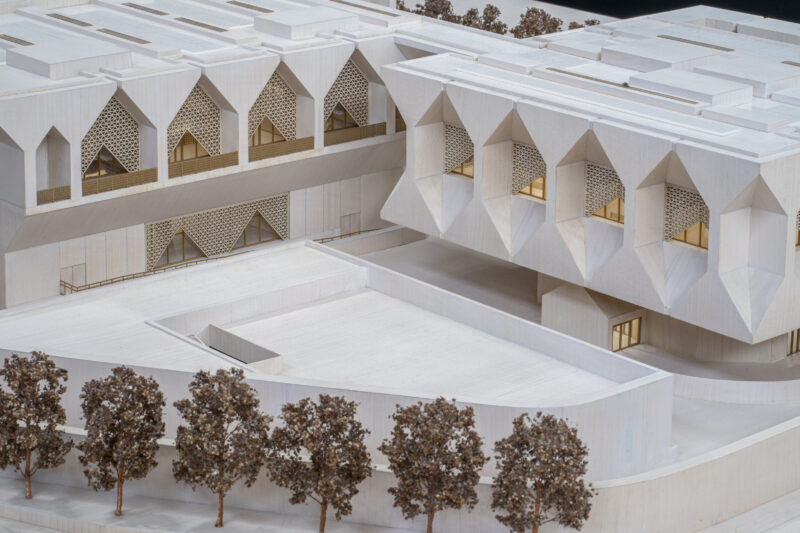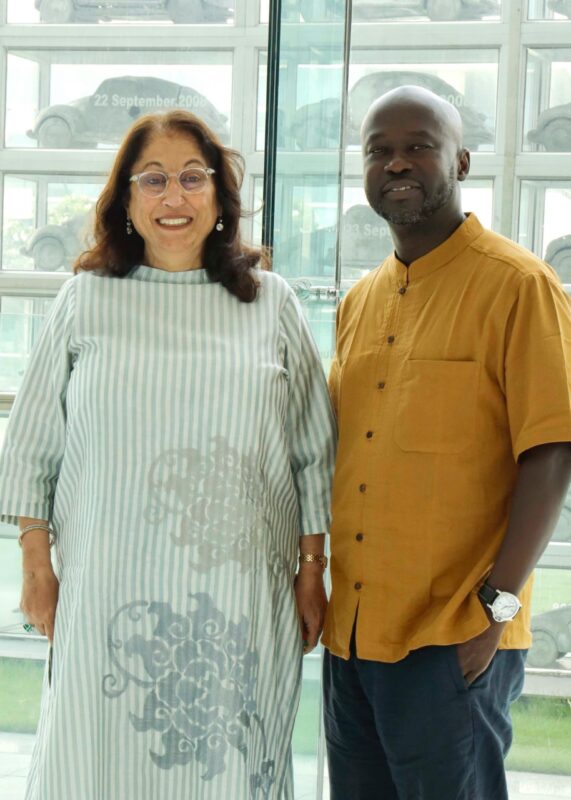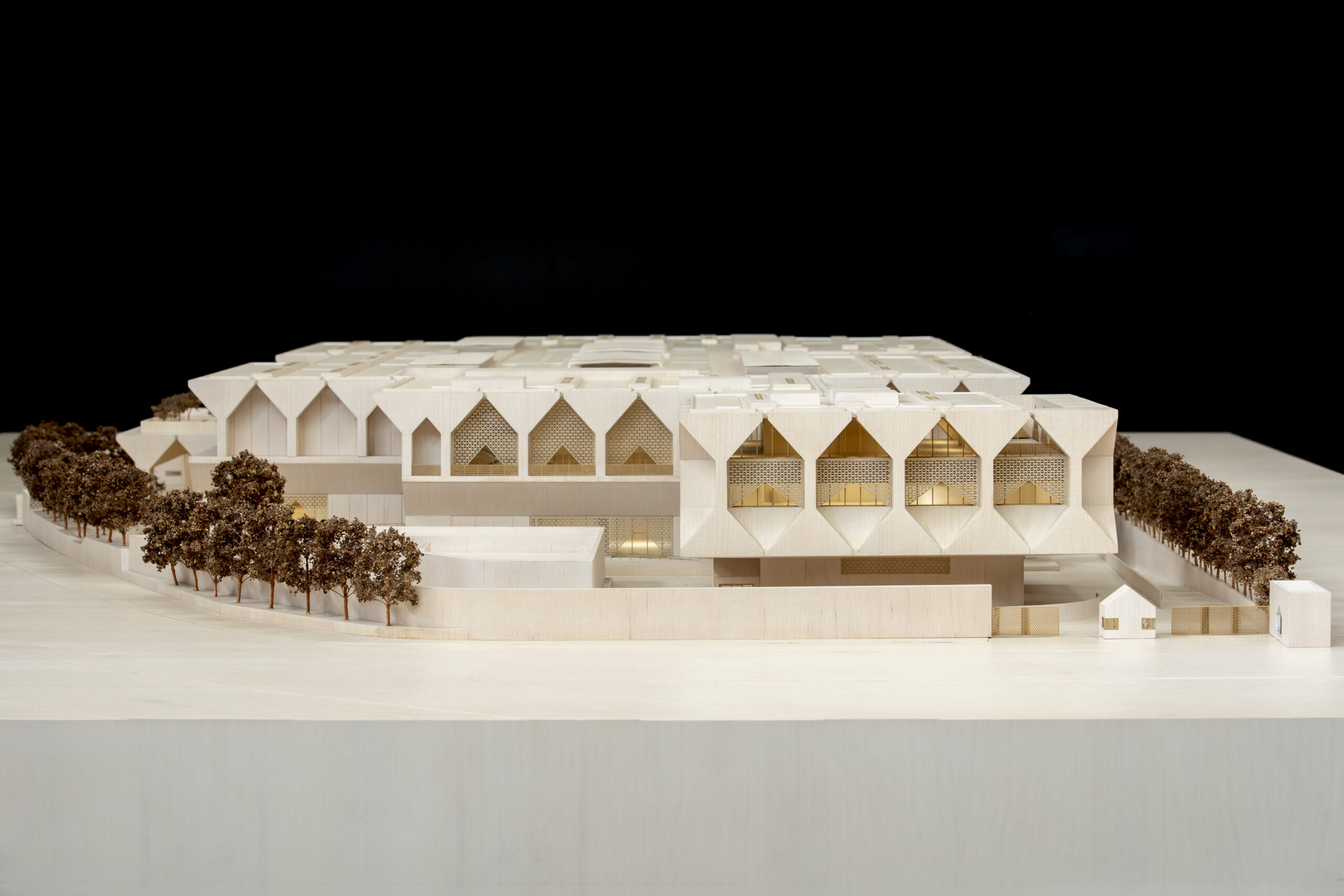When it comes to art, Mumbai has traditionally had an edge over Delhi. But with art connoisseur Kiran Nadar (voted one of 100 most influential people in contemporary art world by the UK-based ArtReview) doing her best to plug the gap and bring art to the masses, Delhi will no longer be a poor cousin when it comes to art and cultural experiences.
Kiran elaborates on her passion for art and museums, “Delhi as the capital city should have more art available for public view so that people can enjoy it. The purpose of museums is to let people who cannot afford to buy and collect the best art, see and enjoy it. I wish more and more people visit and appreciate both master artists and new talent.”
Kiran feels that awareness in Delhi is still less but she wants to spread it through her museums.
“I feel that awareness of art is still at a nascent stage especially in this city. I am a firm believer in democratisation of art and I want to see many more footfalls in museums and galleries. I feel more than happy to share my art collection with the larger public through my private museums. I always felt there was a lack of existing institutional spaces that could bring visibility to modern and contemporary art from India and the subcontinent. KNMA (Kiran Nadar Museum of Art) aspires to become a place for a synergy in art and culture and it will focus on bridging the gap between art and the public and help build a museum going culture in India.”
Lack of culture of museums
Kiran grew up visiting the best art museums of the world and she says it was an invaluable education. She feels sad that despite its rich art heritage, India does not have a museum culture like one sees in European cities.

However, she is optimistic that more people will come forward to set up museums and kindle a greater love for art among the local population.
Convinced that art is important for building national character, and children, in particular, should be in proximity to art as much as possible, Kiran intends to make school excursions to art museums and exhibitions, school and college workshops, art appreciation discourses, symposiums and public programs all part of the KNMA core agenda.
With the newest offering, the third KNMA underway in Delhi, the city will soon have an artistic hub that will be among the best of its kind. The new space is part of a repertoire of museums of art that includes existing ones in Saket, New Delhi and Noida.
The upcoming space is designed by renowned Ghanaian-British architect Sir David Adjaye in collaboration with architects S. Ghosh & Associates. It will be India’s largest cultural centre when it opens in Delhi in 2026.
The first of the museums was opened in 2010 when Kiran (wife of tech entrepreneur and HCL founder Shiv Nadar), who is among the most eminent art collectors of the country, pioneered a private museum exhibiting modern and contemporary works from India and the subcontinent.
The museum’s collection of over 10,000 modern and contemporary works draw on the region’s rich cultural history.
Now under construction, the third museum, spread over a sprawling 100,000 square metres, will be located on the National Highway (NH8) in Delhi, near the Indira Gandhi International Airport.
Playing host to programmes
The new KNMA will host changing exhibitions, permanent displays, and performances as an international cultural destination for visual arts, music, dance, and theatre and enable far more of the collection to be seen at any one time.
In addition to encouraging visual and intellectual dialogue, the museum includes innovative programmes with active collaborations from artists as well as the public.
The founder-chairperson of KNMA is understandably excited.

“The third KNMA has been conceived as a world-class cultural centre, a state-of-the-art building and a cultural powerhouse open to all. It will be a place for cultural discovery, a place for confluence and diverse conversations, with a high engagement across a broad range of audiences. At the heart of KNMA is the notion of giving back to society, preserving treasures of the cultural past and nurturing a young generation of creative practitioners and thinkers, while bridging the gap between art and the public.”
Architect Adjaye, who spearheads the design of the museum, says, “This is an opportunity to embolden the rise of contemporary Indian art, releasing a new cultural offering for both the people of India, as well as for the wider global arts landscape. Its location in Delhi — one of the oldest cities in the world with a lineage of habitation that stretches to the sixth century BC gives new context to its position as a dynamic, living cultural force. As such, its specific location within the city directly influences the new building’s form, rhythm and landscape.”
Roobina Karode, chief curator of KNMA, adds, “The upcoming complex provides an opportunity for KNMA to chart novel grounds as we take the museum towards new horizons. With the new architecture in place, we address how the question of memory and history in the post-partition subcontinent presented the crucial sites for artistic inquiry, unravelling the mechanics and structures of remembrance along the fault-lines of time and space.”
The existing KNMA museums are a must visit for every art lover in the city. These spaces are free-to-view private museums with an enviable collection of master artists that most people would rarely find an opportunity to view.
Kiran, who has an amazing personal art collection, says she is more than happy to share these precious artworks with those who love art but are not in a position to own them. Hence, the KMNA was conceived as a not-for-profit institution that produces rigorous exhibitions, educational and public-focussed programmes and publications. Through its work, KNMA supports networks for artists and creative communities, while extending its reach to diverse audiences. The museum houses a growing collection of more than 10,000 artworks, with focus on the historical trajectories of 20th century Indian art, alongside the experimental practices of young contemporaries. It will also host film screenings, curated programs such as art walks as an integral part of an inclusive art and culture itinerary.
A labour of love
This initiative of the art collector and philanthropist found support from the Shiv Nadar Foundation. Kiran says her vision is to see KNMA shape and inspire the Indian art world, becoming a pivotal force in the country’s cultural landscape with an influential vision that has increased the visibility of Indian modern and contemporary art worldwide.

Through consistent efforts and unfailing enthusiasm, she has given India a global platform that showcases and promotes Indian art. The institution’s activities are currently spread over the two KNMA spaces with a combined display area of 50,000 sq. ft that are a place of confluence for varied art forms, ensuring art’s accessibility to people and aspiring to nurture a museum-going culture among audiences from all age-groups.
Private art museums are a part of a growing global trend in the art world as more and more collectors are ready to share their collections with the public.





